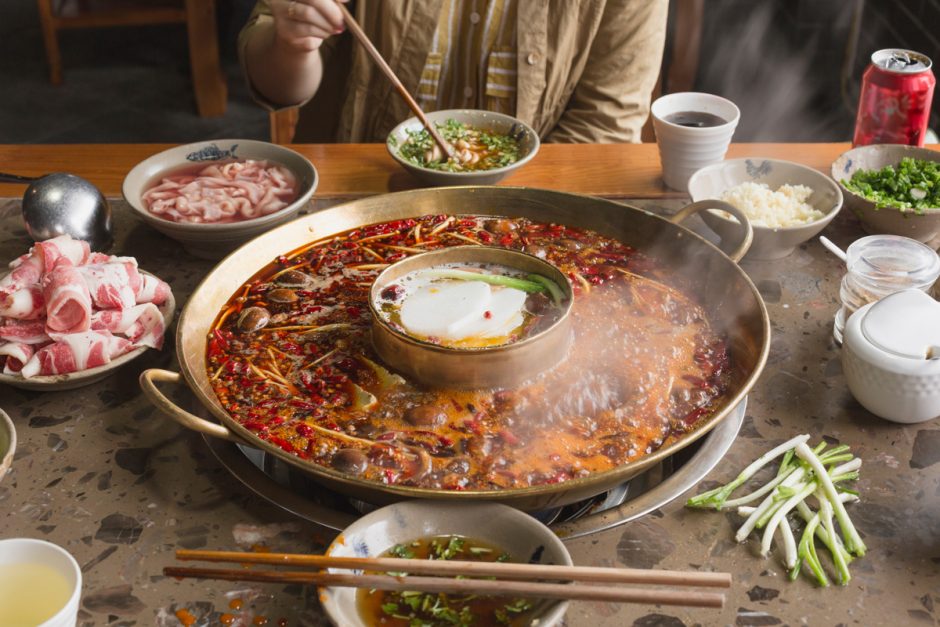Sichuan province in central China is known as ‘the flavour centre’. While Cantonese food dominates the palette of most Australians, Sichuan food is gaining popularity. With its mounds of chilli and intense, salty, spicy flavour, it’s a fantastic cuisine for winter and a nice alternative to more demure and—dare I say it—sophisticated Cantonese dishes.
Sichuan hot pot is one of the most famous varieties of one of China’s most popular dishes. The commonly accepted theory traces the Sichuan hot pot back to the early 20th century and to port workers and fishermen who worked and lived along the Yangtze River. They couldn’t afford to eat regular cuts of meat, so they figured out a way to cook cheap cuts, leftovers and offal by boiling the lot in a pot of extremely spicy broth. The fiery soup was first intended to disguise the slightly dodgy taste of the various ingredients used, but after some experimentation—and a few more spices—this one-pot meal grew in stature and spread throughout Sichuan and soon far beyond.
Modern Sichuan hot pot is a much more refined dish. These days, it’s full of high-quality meats and even seafood, but the heavy spice and heat remains. As with all great dishes, it’s adapted and changed at every restaurant and part of the world it’s served. In fact, one of the most famous varieties comes from Chongqing—a giant city right next to Sichuan, but not actually in the province. There’s a plethora of ways to eat Sichuan hot pot, with restaurants offering the hardcore, deep red chilli oil broth, packed full of Sichuan pepper and handfuls of chilli, or a clear broth with less spice that will give your gut an easier time. Some places will even do a half and half, served in a hotpot divided down the middle (really just two small hot pots). Don’t expect noodles; it’s all about the meat and veg—no carbs to take up space here! And trust us, you won’t need them!
There’s a few things you need to remember when you’re eating Sichuan hot pot—guidelines if you will. First off, beer helps! The local beer is often quite light and easy to drink, and the yeasty beverage will help coat your gut and quench the flames starting to dance on your taste buds. Dipping your meat in a sesame oil before eating also helps cut through the spice and limit the impact on your palette. Remember: As the broth continues to boil, cook and concentrate, it will get spicier! While you may be fine early in your hot pot experience, as you continue to eat and the liquid continues to boil down, beware that it may get spicy very quickly! If it’s a proper hot pot full of pepper, your mouth may even feel a little numb. Don’t panic; just take a sip of beer—and maybe a short break—before you keep eating.
Hot pot is a wondrous dish that brings people together. It’s popular in China as much for the social aspect—everyone sharing a big pot, chatting and laughing—as it is for the taste. It’s a great dinner party option and a great way to generate conversation at the table. If you’ve got a large group and need a quick bite, it’s the perfect solution.
As always, let us know your thoughts and whether you’ve survived this mouth numbing delight!






You must be logged in to post a comment.